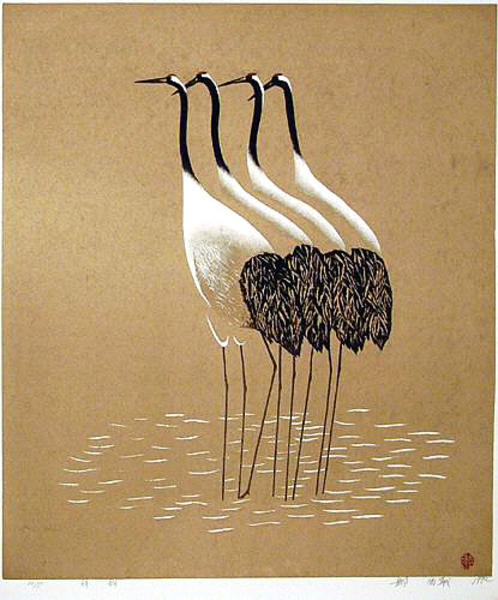| | |
| Artist: | Hao Boyi (born 1938) |
| Title: | Favonian Melody |
| Series: | |
| Date of first edition?: | 1992 |
| Publisher (first edition)?: | Not Set |
| Publisher (this edition)?: | Not Set |
| Medium (first edition): | Woodblock |
| Medium (this edition): | Woodblock |
| Format (first edition): | Not Set
|
| Format (this edition): | Not Set |
| DB artwork code: | 34466 |
| Notes (first edition)?: |
|
| Notes (this edition)?: |
| The following information was taken from the original web listing of this artwork. Note that there may be some inaccuracies:
Title Favonian Melody
Artist Hao Boyi born 1938
Signature Signed, dated and numbered by the artist in pencil
Seal artist's seal
Dated 1992
Period 20th Century
Technique/Medium Woodcut
Material/Paper Laid Paper
Impression excellent
Colors excellent ... very nice brown-golden background
Condition excellent ... lower left margin and top right corner very slightly creased
Rating 1 = excellent
Edition Size 50
Numbered 12/50
Description "Favonian Melody" In the Chinese culture cranes and pines are a symbol of a long life. Therefore people like to collect and decorate their homes with pictures of cranes as a good luck symbol. In this picture, the four cranes like 4 musical notes, play a harmonic melody.
Note Images do not show margins and are not taken from the individual print. With regard to the very minor differences within one edition and the large sizes, we use the excellent stock images provided by our Chinese consignee.
Width 22.2 inches = 56.5 cm
Height 25.4 inches = 64.5 cm
Width of Image 18.1 inches = 46.0 cm
Height of Image 21.5 inches = 54.5 cm |
|
| Artist Bio: |
Hao, Boyi was born in 1938 in Shangdong Province. During the cultural revolution, he was dispatched to the northern deserted land. Facing the harsh and tough new environment, he accidentally found arts as his refuge. He cut wood to be his block and painted the beautiful sceneries of the black deserted land by his graver devoutly and passionately.
As time goes by, Hao Boyi's woodcuts were no longer just objective recordings of his environment. Above the visual representations, they also show the unity of nature and human as well as the devotion for life. His style is soft, fresh, elegant and subtle. His artworks are simple but not empty. They show unlimited flavors and vitality of the north land to its full extent quietly; the concrete and the abstract blend harmoniously and peacefully.
|
|


